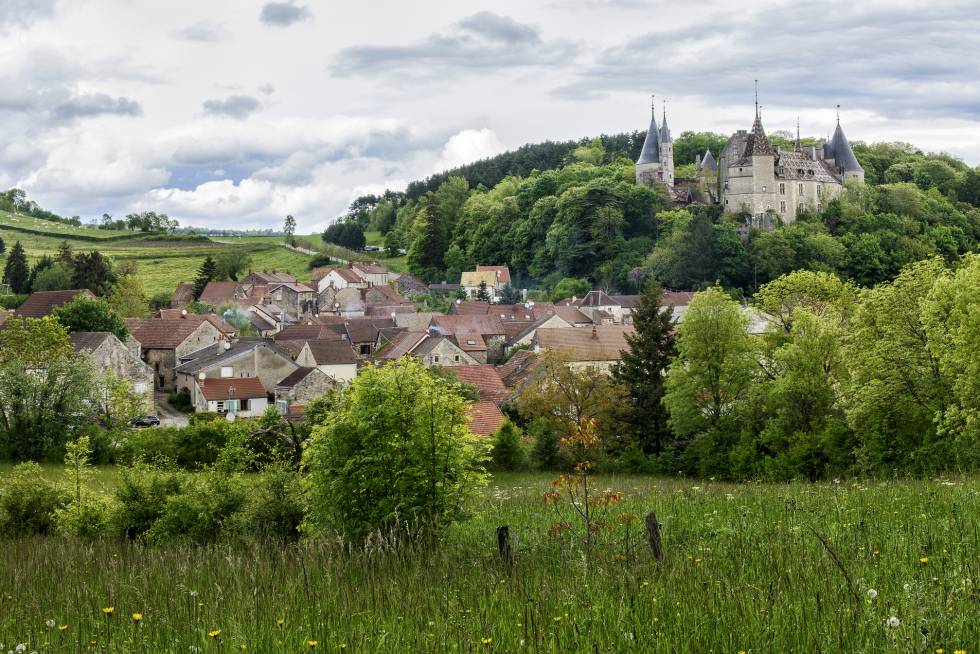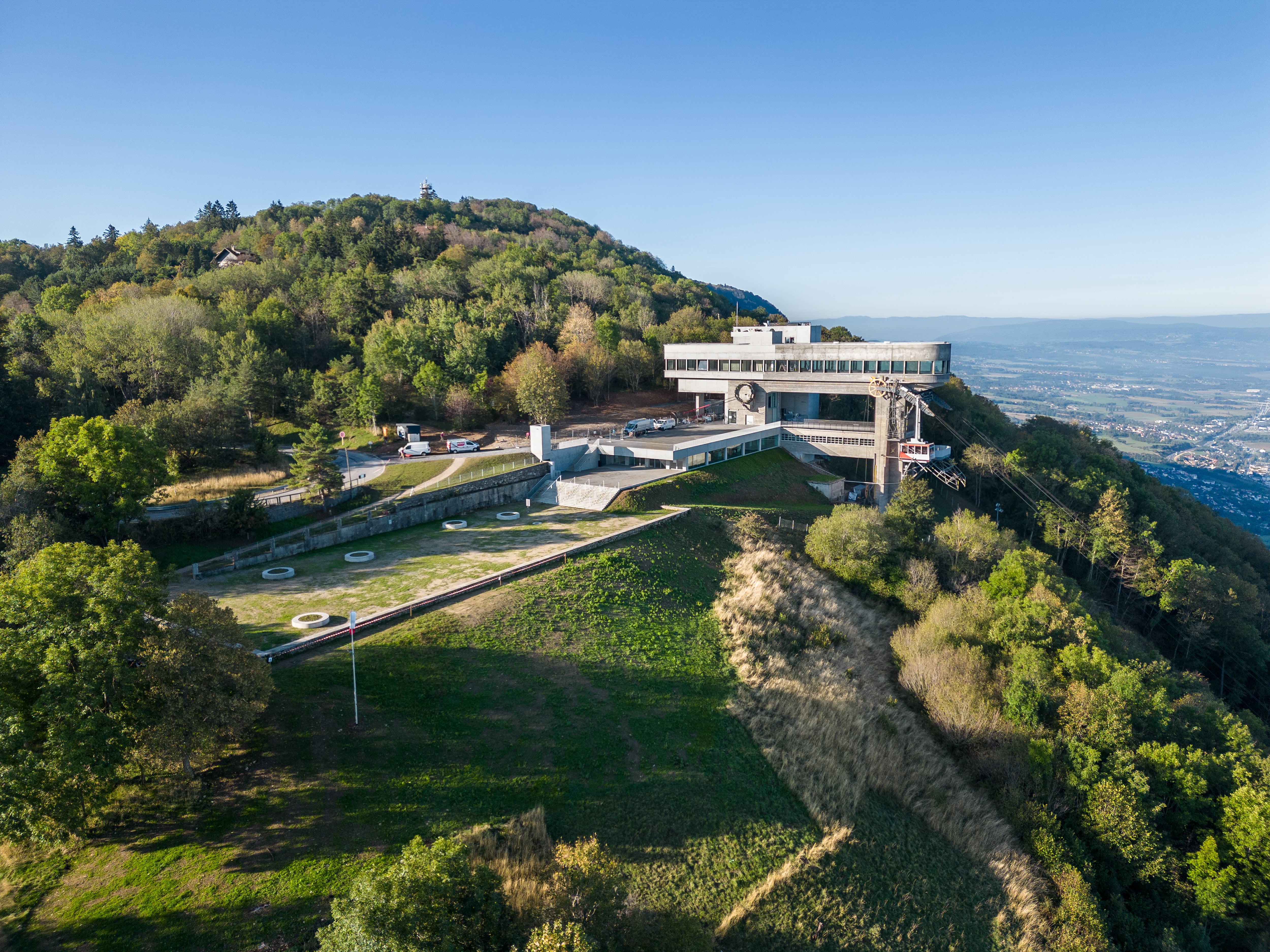The final Monday in July seemed as if it would be another idyllic day on the Palos Verdes Peninsula.
While much of Southern California was broiling, Peninsula residents were enjoying pleasant temperatures and a cool, gentle breeze blowing in off the ocean. Serried brush swayed in the wind. Red-tailed hawks soared above.
But the Peninsula is not as idyllic as it once was.
And so, on the morning of July 29, an electrical wire detached from its pole: Pop. Flash.
The wire, near the Seaview neighborhood in Rancho Palos Verdes, had touched a low-voltage conductor, causing what Southern California Edison calls “a flash event.”
On the Peninsula, beloved for its panoramic ocean views and pastoral scenery overlooking the urban sprawl of Los Angeles County, such events threaten danger:
On this day, however, SCE workers averted the danger. But that same morning, 135 residents just up the road, in the Portuguese Bend area of RPV, had gas service shut off – casualties of a second danger:
Land movement.
The dual phenomena have more or less always existed on the Peninsula. But the latter, with the ability to sunder buildings just as well as the former, has become more urgent of late, particularly in the 680-acre area of RPV known as the Portuguese Bend Landslide Complex, putting some of the priciest homes in the country in peril.
That’s because the last two winter seasons brought historic deluges to the region, causing the land beneath those homes to move at an unprecedented, accelerated rate. Scores of homes have already been damaged. The iconic Wayfarers Chapel has been dismantled. Popular hiking trails have been shuttered. A main road through town is closed to two-wheelers.
Slide work continues on Dauntless Drive in Rancho Palos Verdes where weather and land movement continue to be a problem on Thursday, Aug. 8, 2024. (Photo by Dean Musgrove, Los Angeles Daily News/SCNG)
And residents and governmental officials alike have sought solutions – knowing full well there’s no panacea.
At the same time, the verdant Peninsula is in what the Office of the State Fire Marshal has designated a Very High Fire Hazard Severity Zone.
That’s particularly problematic now, since the ongoing land movement has also stressed public utility infrastructure – such as gas and electrical lines – which, in turn, has increased the risk of wildfires.
Managing the twin threats, while ensuring residents can remain in their homes, is fraught with complications, causing frustration among those who live there and pleas for help from public utility and government officials.
“Our infrastructure is moving at a rapid rate with your land movement,” Celina Luna, SCE’s government relations manager, said during a July 31 town hall. “That is what’s creating a dynamic situation.
“In normal conditions, you are at risk for fire,” Luna added. “Now that’s escalated. This is what we are dealing with.”
Residents, many of whom are already without natural gas, seem acutely aware of that. They fear they could soon lose power and water as well, which would force them to dole out for expensive alternatives such as generators – or relocate. Some have expressed reticence about reporting incidents or anomalies with their utilities – and about allowing the government to inspect their homes – because of such fears.
Not doing so, though, could hinder efforts to prevent wildfires, which could decimate the Peninsula and endanger residents. Yet, from the local government’s perspective, losing power could also limit its ability to stabilize the ground. And some officials have expressed worries that generators themselves could possibly spark fires.
Taken together, these issues have created a precarious situation that has upended daily life for many in Rancho Palos Verdes.
Wildfire risk
The July flash event underscores the hazards associated with land movement.
As soon as the spark occurred, power to 40 customers in the Seaview area was automatically cut, said SCE spokesperson Reggie Kumar.
To repair and reinstall the broken wire, an SCE lineman has to inevitably climb a pole.
But because the affected poles were leaning so much, because of the shifting land, officials first had to determine if it was even safe to climb them, Kumar said.
As the land moves, Kumar said, poles that support electrical wires are migrating from their original positions. That creates either extra tension or slack in the lines. Neither is a good scenario.
“Both of these conditions can cause an electrical fault to occur,” Kumar said, “which results in a power outage when our circuit protection devices de-energize the fault.”
After losing one essential service – natural gas – some Portuguese Bend residents are now convinced it’s only a matter of time before they also lose electricity – and not necessarily without cause. The former estate of their founding father, Frank Vanderlip, lost both services nearly a month ago.
And several plumbing and propane contractors who staffed last week’s city information and resource sessions predicted it was only a matter of time before SCE shuts off power to those same homes.
But SCE, Kumar said on Thursday, Aug. 8, has no imminent plans to cut power.
Kumar, though, also acknowledged that the situation is fluid. The land, after all, is moving up to 13-inches a day on the Peninsula.
“Customers should, of course, prepare for electricity shut off,” Kumar said, adding that if it comes to that, the company would do its best to provide “as much notice as possible.”
Some residents, though, are already preparing for the lights to go off, while others will soon do so.
There are those, for example, who have already installed propane tanks or solar panels, and have converted appliances to those new systems.
Nancy Kalthoff, on the other hand, is just getting started. Her home on Narcissa Drive, which she’s lived in since 1995, has a cracked patio and a buckled driveway.
She’s fortunate that her 2,500-square-foot home is on a raised foundation, meaning it has a degree of separation from the land movement.
But still, she will likely convert two water heaters to propane to the tune of $8,000. It’s out-of-pocket, Kalthoff said, because insurance won’t cover it.
Kalthoff is also getting creative: She’s showering at a local gym and using an electric hot plate. And if SCE shutters service, Kalthoff said, she will research solar options.
Kalthoff, in general, reflects her community’s resilience and independence. At least according to Mayor John Cruikshank.
“People solve their own problems here,” the mayor said in a Tuesday, Aug. 6, interview, “and they don’t necessarily need government for that much.
“The people who are in this area have lived through a lot their entire lives,” he added. “And they’re rugged.”
He’s not the only one who thinks that.
One Portuguese Bend resident, for example, said during the city’s July 31 town hall meeting that she’s not too keen on calling SCE to report tight wires – fearing they could lose power.
“We’re resilient people here,” she said.
But that’s the opposite of what should happen, according to LA County Assistant Fire Chief Brian Kane.
The fire department is not automatically notified if there’s a downed wire or if there’s a flash event, such as the one that occurred on July 29, Kane said in a Friday, Aug. 9, interview.
“It would still take a call from either a resident or from an SCE worker themselves to make that notification,” Kane said.
And if that call doesn’t come and a fire happens, the area could go up like tinder.
“Wildfire can spread at an exponential rate,” Kane said. “It could go up the hill into other communities and we need to get a handle on that as quickly as we can.”
Both Cruikshank and Kumar agreed residents need to report downed wires, flash events and the like.
But, Cruikshank added, trust – in both the local government and the utility companies – is crucial.
The trust in the latter, though, is frayed.
When the 135 residences lost natural gas service, they had little more than two-days notice. Most learned of the impending Monday morning shut-off the previous Friday evening.
That left some residents scrambling to convert gas cooktops and ranges, water heaters and clothes dryers.
SoCal Gas, for its part, offered $2,500 in assistance to each account holder and acknowledged it was a tough time for the community.
Kumar also said he understood what residents are going through.
“The last thing we want to do is turn the power off,” Kumar said. “We know this is a difficult time for this community.”
But SCE needs the community’s support to keep everyone safe, he said.
If a wildfire does occur, however, the fire department will not be deterred from fighting it – regardless of the geologic constraints.
“We’re here through the long haul,” Kane said.
The fire department also has an ally in Jim York.
York, who owns Catalina View Winery, has long been concerned about wildfires, especially since a July 2005 fire began on his property after a power pole fell and caused a live wire to hit brush. The fire ultimately burned 250 acres.
York has granted the fire department access to a private road that runs near his winery, making traversing the terrain easier.
And the fire department, Kane said, also has a special patrol vehicle for the Peninsula that is like a mini-fire engine, complete with hoses and a water tank. The vehicle is built on a heavy-duty truck chassis, so, unlike full-sized engines, it can transverse the rougher terrain caused by landslide fissures. And though a quarter of the size of a regular fire engine, it still carries around 250 gallons of water – about half its larger brethren.
“The fire department as it related to 911 services will not be interrupted,” Kane said, “regardless of the status of road service and utility companies.”
To help navigate the rough terrain caused by recent land movement in Rancho Palos Verdes, Los Angeles County Fire Department has deployed a mini-fire engine dedicated to the Portuguese Bend area, in Rancho Palos Verdes on Friday, Aug. 9, 2024. The vehicle, complete with hoses, tanks and water, is about 1/4 the size of a fire engine. It is built on a pick-up chassis with four-wheel drive…(Photo by Brittany M. Solo Press-Telegram/SCNG)
SCE also has innovative ways to help reduce the chances its infrastructure can cause wildfires.
The utility company has regularly inspected its equipment since RPV first declared a local emergency in October, Kumar said.
And it does so in myriad ways: field crews, helicopters, all-terrain vehicles – and drones.
Drones have become a common tactic in wildfire-prone areas, Kumar said.
“Our communities are safer,” he said, “because we’ve identified potential ignition risks associated with our equipment from a bird’s-eye perspective to supplement inspections from the ground.”
Drone inspections, which began last week and will continue in RPV through at least year’s end, have another benefit: getting around the lack of access from customers.
But that’s still not ideal, Kumar said.
“We are asking the community to work with us,” he said, “so we can access, inspect, and maintain our electrical infrastructure to keep everyone safe.”
Power needed to stabilize land
But if there’s a problem with electrical infrastructure and there’s no safe way for SCE to access the area, shutting off power could be necessary.
The day after SoCal gas shut off power to 135 residents, in fact, SCE notified about 525 homes across Portuguese Bend and three other neighborhoods about the potential to discontinue power with little to no advanced warning, if conditions warrant.
That’s according to a letter Cruikshank recently sent Gov. Gavin Newsom, asking him to declare a state of emergency in Portuguese Bend because of the severe “energy shortage.”
“Affected residents,” he wrote, “are struggling to keep pace in an ever-changing landscape that not only damages utilities, but the integrity of homes, streets and services.”
But residents’ quality of life isn’t the only concern should the power go out. Losing power could also hinder efforts to slow the land movement.
Underground dewatering wells are currently pumping groundwater out of the landslide areas to help slow the movement. But they get power from SCE.
Currently, only seven of 22 dewatering wells are operating, said Gordon Leon, chair of the Abalone Cove Landslide Abatement District. That district, which is within the Portuguese Bend area, is working to get other wells up and running, with the help of a $1.6 million loan from the city.
But if power is shut down, the dewatering wells will stop working.
It’s crucial to keep the wells working, Cruikshank said.
That could happen with generators, he said – but that brings up a whole host of problems.
Generators could result in fire hazards or “other issues that you don’t have when you have nice power lines going right to the system,” Cruikshank said.
SCE’s Kumar, for his part, said the utility company will work with RPV to ensure crucial pieces of infrastructure such as the wells stay energized – but there’s a caveat:
That the “area of the circuit is not a potential safety risk due to the accelerated land movement,” Kumar said.
If SCE cannot safely serve a particular location, Kumar added, the company will reroute power as close as safely possible.
The company would “provide a connection point, and the city would install their own equipment to get electricity to that location,” Kumar said, “similar to how power is fed to city traffic signals and irrigation systems.”
Either way, stabilizing the ground is paramount.
Red-tagging not the goal
In July 2023, a landslide in adjacent Rolling Hills Estates caused 10 homes to begin sliding toward a ravine.
The homes were red-tagged – and the residents have yet to be allowed to return.
While unrelated to the Portuguese Bend Landslide Complex, the disaster nonetheless catalyzed the entire Peninsula to act more urgently to address the dangers of the shifting earth. The cascade of problems RPV has faced – Wayfarers, the trail closures – followed shortly after and further underscored the threat.
But the fear of having their homes red-tagged also underpins the reason some residents don’t want to report issues to SCE.
They worry either the loss of essential services or foundational instability could cause the city to declare their homes uninhabitable.
So far, only two homes in RPV’s Seaview neighborhood have been red-tagged, as well as the administration building of Wayfarers Chapel, both of which have since been dismantled.
But more could be on the way. RPV recently completed its “windshield inspections” of nearly 400 homes in landslide-impacted neighborhoods.
The city looked for signs of structural stress or damage to existing structures that are readily apparent from the roadway, Community Development Director Brandy Forbes said during last week’s City Council meeting.
Some of those homes could receive an advisory letter asking them to schedule a voluntary inspection with the city’s building division within 10 days. Officials said the exact number was not available.
“There may be more extreme situations where a portion of the home remains habitable and accessible to the homeowner, and only the area of concern would be restricted from use until repaired,” Forbes said. “And the city wants to work with the homeowners to find solutions, on a case-by-case basis, to shore up those structures for safe habitation.”
Cruikshank also said the goal is not to red-tag homes – but to find solutions while keeping residents safe.
“I know that many residents are reticent to have that happen,” Cruikshank added, “but we don’t want anything happening to you, your family, your neighbors or our first responders.”
That’s why, if residents receive an advisory, it is important to allow the city to come inspect, the mayor said.
“Nobody wants to make people vacate their homes,” he said.
Coming together
The city of Rancho Palos Verdes set up an information resource center for residents impacted by losing gas service in Rancho Palos Verdes. There were county and state emergency agencies there as well as some vendors such as those selling generators and solar power. The event was held at the Ladera Linda Community Center, Tuesday Aug. 6, 2024. Gordon Leon of Portuguese Bend talks with representatives at the resource center.(Photo by Chuck Bennett, Contributing Photographer)
The residents also don’t seem intent on fleeing the Peninsula for more stable ground.
The ongoing land movement may have upended their beloved way of life, but leaving would sever it.
“We’re committed to staying,” said Leon, the chair of the Abalone Cove Landslide Abatement District.
And if there’s a silver lining to the current twin threats, it’s that the residents have united.
Neighbors are meeting people who were previously strangers, despite living side-by-side for decades. They’re swapping stories and trading information on contractors. They’re offering support of all kinds.
“People I hardly know have offered me their showers,” a disbelieving Kalthoff, the one using the showers at her gym, said recently.
But the land movement, as well as the risks of wildfires, still lurk as ever-present worries for many. It’s a nervy time on the Peninsula – even for the well-prepared.
One couple – Tim and Joan Kelly, who moved to the area in 1994 – had already spent tens of thousands of dollars on a solar grid. Tim Kelly considers that lucky.
But he’s still worried.
“We’re all nervous,” Kelly said. “And we’re all concerned for our neighbors.”
Their idyllic Peninsula, after all, isn’t quite as idyllic anymore.
Staff writer Michael Hixon contributed to this report.
Related Articles
SoCalGas to shut off gas to Rancho Palos Verdes’ Portuguese Bend area Monday
Wayfarers Chapel, jolted by shifting land, will be fully dismantled
Land movement forces Rancho Palos Verdes to prohibit motorcycles and bicycles on main road
Work to dismantle Wayfarers Chapel begins in earnest in Rancho Palos Verdes
To avoid ‘catastrophic loss,’ beloved Wayfarers Chapel will be dismantled starting this week























